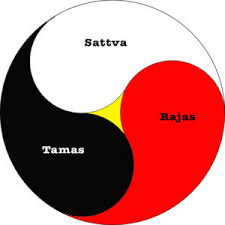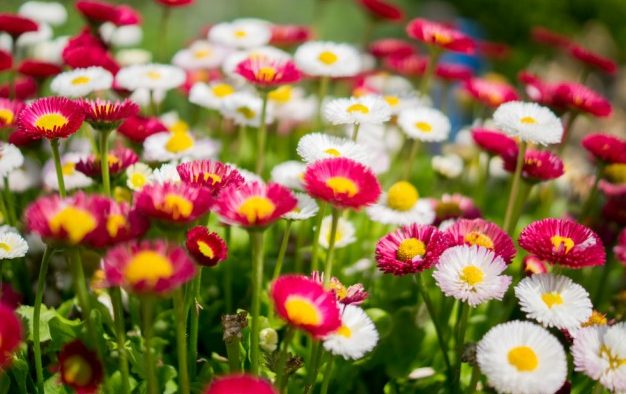[Lecture delivered during Bharat Yoga Yatra on 11 April 2014, Worli, Mumbai, India. Sourced from YOGA monthly magazine published in 2015 by Yoga Publications Trust, Bihar Yoga Bharati. https://satyamyogaprasad.net/emag]
The theme and subject of the Bharat Yatra is ‘Know Yourself and Find Divinity in Life’. The medium to know one’s self and to attain the higher qualities of life is through the process of yoga. Yoga has to be understood in the right perspective. Your understanding of yoga is limited to postures and breathing, and possibly to some form of meditation. That is not yoga. Yoga is much more than the practice that you do in form of asana, pranayama, relaxation and meditation.
The attention of humanity at large has been on these, believing them to be the complete yoga. Those who think asana, pranayama, relaxation and meditation are not enough, think of yoga as kriya yoga and kundalini yoga. Beyond this people have no understanding of yoga. Yoga is not only a practice; it is also a sadhana, a lifestyle and the culture of the individual. Therefore, you have to look at the various aspects of yoga from this angle.
Yoga practice
Yoga practice is something that the majority of you do for your own reasons, pursuing your own aspirations in yoga, be they physical health or mental peace. When you come to yoga you do not come to yoga as a sadhaka or aspirant. You come to yoga as a person who needs rectification in his life, to better experience health and peace of mind. Once you attain better health and that little bit of mental peace you think that yoga has completed its purpose, and you stop the practice. In the practice aspect, you are using yoga practices and techniques of asana and pranayama, relaxation and meditation to improve your health, to improve your mind. It is all for your improvement. Whatever practice or technique you apply to improve yourself does not go beyond asana, pranayama, relaxation and meditation.
Yoga sadhana
 There is another aspect of yoga sadhana. The purpose of yoga sadhana is to follow the aim defined by yoga. If it is said in the Yoga Sutras of Sage Patanjali that the purpose of yoga is chitta vritti nirodha, managing the mental modifications, then your yoga practice must lead you and provide you with the skill and ability to control your chitta vrittis. That is your sadhana. When you follow the aspirations defined by yoga, setting aside your personal requirements and needs of the body and mind, you become a yoga sadhaka. That is when you follow the aim decided by yoga. Every yoga has a definite aim, a focus and a goal. What is the aim of karma yoga?
There is another aspect of yoga sadhana. The purpose of yoga sadhana is to follow the aim defined by yoga. If it is said in the Yoga Sutras of Sage Patanjali that the purpose of yoga is chitta vritti nirodha, managing the mental modifications, then your yoga practice must lead you and provide you with the skill and ability to control your chitta vrittis. That is your sadhana. When you follow the aspirations defined by yoga, setting aside your personal requirements and needs of the body and mind, you become a yoga sadhaka. That is when you follow the aim decided by yoga. Every yoga has a definite aim, a focus and a goal. What is the aim of karma yoga?
To acquire immunity from the effect, actions and reactions in society and in the world. That is the purpose of karma yoga: immunity from actions and reactions. Another purpose of karma yoga is the cultivation of the quality of excellence. That is the aim decided for karma yoga.
What is the purpose of bhakti yoga? Sublimation of human emotions. The aim of bhakti yoga is to divert the human emotions to discover yourself. Human emotions flow outwards into the world and they connect you to the world. Therefore, the purpose of bhakti yoga is sublimation of human emotions that are directed out into society. In bhakti yoga you redirect and rechannel your emotions to enable you to discover yourself. That is the purpose of bhakti yoga.
What is the purpose of jnana yoga? To know you are an extension of the cosmic creation; to apply creativity, to enhance the beauty of this creation, and not to destroy this creation. That is the purpose of jnana yoga.
What is the purpose of hatha yoga? Harmony between the twin forces of ida and pingala, the solar and the lunar forces. Have you achieved it in all your years of hatha yoga practice? No, since you never considered that aspect of yoga. You only considered the physical aspect of yoga as needed by you.
What is the purpose of raja yoga? Managing the mental modifications. People who have practised meditation for the last thirty years are unable to control their mental behaviour; their anger, fear, insecurity and frustration. What is the purpose of that meditation which you have practised for the last thirty years and which has not taken you anywhere? You are still the same in your mind, you are still the same in your behaviour, you are still the same in your thinking, and you are still the same in your responses. Where is the qualitative improvement that you are looking for in yoga? Where does the mistake lie? Not in yoga, but with your understanding of it.
Yoga principles
Yoga is a tool, and the person who uses the tool is you, the individual. The knife is in your hands; how you use the knife has to be decided by you, not by the knife. Therefore, how you use yoga is decided by you, according to your choices and needs. That is where you have made a mistake, as you have not been able to understand the full scope of yoga and its influence on human life.
Setting aside for the time being the asana, pranayama, relaxation and meditative component, look at what other forms of yoga are there to improve the quality of life and of the human being, the practitioner. Can the enhancement of the human personality take place only with the practice of asana, pranayama, relaxation and meditation? The answer is no.
How can enhancement of the human faculties take place in life? For that you have to understand the principles and not the practices of yoga. In order to know the principles of yoga, study the literature of Swami Sivananda. In his books he has clearly defined the barriers that restrict your journey on the path of yoga. He is not looking at asana, not pranayama, not relaxation, not meditation, not kriya, not kundalini, not chakra, but at yoga principles.
Nine traits to be avoided
Swami Sivananda says that in order to experience the purity, strength and creativity of one’s self there are nine traits that one has to watch out for. One should guard against these nine traits, for these mind traits do not allow one to grow spiritually. What are these traits that have to be observed, managed, modified and transformed? According to Swami Sivananda, these are the traits which restrict the growth and evolution of the human mind and consciousness: Number one is ‘avidity’; it is the same as greed. Number two is lust or passion. Number three is stupidity, which is delusion or infatuation. Number four is arrogance or impertinence. Number five is confusion of mind. Number six is instability of mind; it means dissipation of mind, a wandering, unstable mind. Vanity is the next trait. Eccentricity is slavery to whims and fancies, and the last is irritability, which is anger in all its forms. These are the traits that you have to avoid or guard against for your spiritual growth. How do you guard against these traits that are common and happen every day? You go through those experiences and situations, so how can you avoid these negative traits?
Cultivate the opposite
The answer is given in the tradition of yoga. The answer is simple: pratipaksha bhavana, cultivating the opposite virtue, cultivating the opposite thought. Greed or ‘avidity’ can be lessened or removed with the practice of generosity. If you practise generosity, charity, daan, giving, then greed can be controlled, modified and transformed from a selfish need to a selfless service. Similarly, passion or lust, ‘cupidity’ can be controlled through the practices of purity: keeping the thoughts, the mind and the ideas pure. You then are no longer swayed by your passions and lust. For, when you are swayed by passions and lust, the purity of mind does not remain anymore and it becomes tainted. That taint of mind makes you behave in an improper manner. Purity has to be there to manage passions: purity of thought and intention, purity in heart and mind. If purity is there, passions, lust and infatuations have no role in your life. Instability of mind, the wandering of the mind, can be managed through the practices of concentration, dharana. The practices of meditation, dhyana, will stop the wandering of the mind. Vanity can be controlled through the practice of humility, eccentricity managed through the practice of right conduct, and irritability through the practice of patience and forbearance.
Negative versus positive
 Cultivating the opposite of a negative trait is known as pratipaksha bhavana. When people ask, “How do I deal with the negative mind?” “Can I eliminate the negative mind?” “Can I remove the negativity from my mind?” The answer is that you cannot remove the negativity of the mind. Whatever quantity is there will always be there. However, you can increase your positivity. Once the positivity increases in your life, the negative automatically goes to the background. Imagine that there is a taraju, scales. On one side you have put the negative tendencies and traits of life, and on the other side the goodness. Which side will be heavier, the negative side or the positive side?
Cultivating the opposite of a negative trait is known as pratipaksha bhavana. When people ask, “How do I deal with the negative mind?” “Can I eliminate the negative mind?” “Can I remove the negativity from my mind?” The answer is that you cannot remove the negativity of the mind. Whatever quantity is there will always be there. However, you can increase your positivity. Once the positivity increases in your life, the negative automatically goes to the background. Imagine that there is a taraju, scales. On one side you have put the negative tendencies and traits of life, and on the other side the goodness. Which side will be heavier, the negative side or the positive side?
The negative is always more weighted than the positive. Nobody can deny it, for negativity comes naturally, and positivity has to be cultivated. Nobody has taught you how to get angry. You have not asked anybody, “Please teach me how I can get angry” or “How can I be envious?” “How can I be jealous?” “How can I be greedy?” No, everybody is asking, “Please teach me how I can love others more.” “Please teach me how I can be a little bit more compassionate.” “Please teach me how I can be more sympathetic.”
You want to learn about cultivating the good and you ask, “What is the way to become better.” Where did the anger, greed and jealousy come from? Did you get them, learn or study about them in any school, college, ashram, or university? No. These are natural traits as life is tamasic.
Tamas all around
There are three gunas: tamasic, rajasic, and sattwic. Tamasic means conditioned, conditioning; rajasic means dynamic; and sattwic means illuminated. Your body, senses and mind are conditioned by the senses, sense objects and the influences of society and the family. This conditioning becomes your samskara, your karma and your mentality.

You are conditioned about religion and about society by your family; you are conditioned about your own personal habits, expectations and needs from life. In the tamasic nature, there is always a desire, an expectation, a goal that you set for yourselves. This nature is reflected as vasana, as kamana, as iccha – desire. This body is tamasic and this mind is tamasic. If the mind was sattwic, there would be no need to discuss anything; we would be in the state of purity and wisdom. When we are not in that state of purity and wisdom, and there is conflict and confusion in the mind and the path is never clear, it is the state of tamas. The state of tamas means ignorance, tamas means avidya, not knowing the appropriate, not knowing the correct, not knowing the right method, and floundering, being confused, uncertain, insecure and fearful. That is tamas.
Focus on the positive
This tamasic condition in life gives birth to the negative traits which restrict the growth and evolution of every human being. The question was, if you place the negatives of your life on one side of the taraju, the scale, and the positive of your life on the other side of the scale, which will be the heavier side? Unquestioningly the negative will be heavier. Then what to do? Do you try to remove the negative and lighten that side of the scale? The more you become aware of the negative, the more depressed you will be for you will see ‘this is what I am’. Therefore, let the negative be there, ignore it and develop the positive. Keep putting more on the positive side of the scale so that eventually it becomes heavier. In the course of time, the negative becomes lighter. As long as you focus on the positive, you are focusing on the uplifting and on the betterment of yourself. The moment you become aware of the negative you fall into the states of anxiety, depression, frustration and unhappiness.
When you are placing the good virtues or the cultivated qualities on the positive side, your awareness is always focused on the positive, and the negative is ignored. If you try to remove the negative, your awareness is focused on and thinking about the negative all the time. You forget the positive and how to strengthen your positive side and qualities.
The concept of pratipaksha bhavana, cultivating the opposite of what you feel and think is the sadhana to manage the traits that restrict the growth or evolution of the human mind, human consciousness and human life. In the Yoga Sutras of Sage Patanjali and by other propagators of yoga the emphasis has been placed on the sadhana of pratipaksha bhavana, as part of yoga sadhana.
Swami Sivananda said you have to guard against the nine traits, for they are emanations and reflections of your own mind. They are your own creations. Therefore, guard against those destructive, self-created impositions which will restrict your happiness, peace and prosperity.





